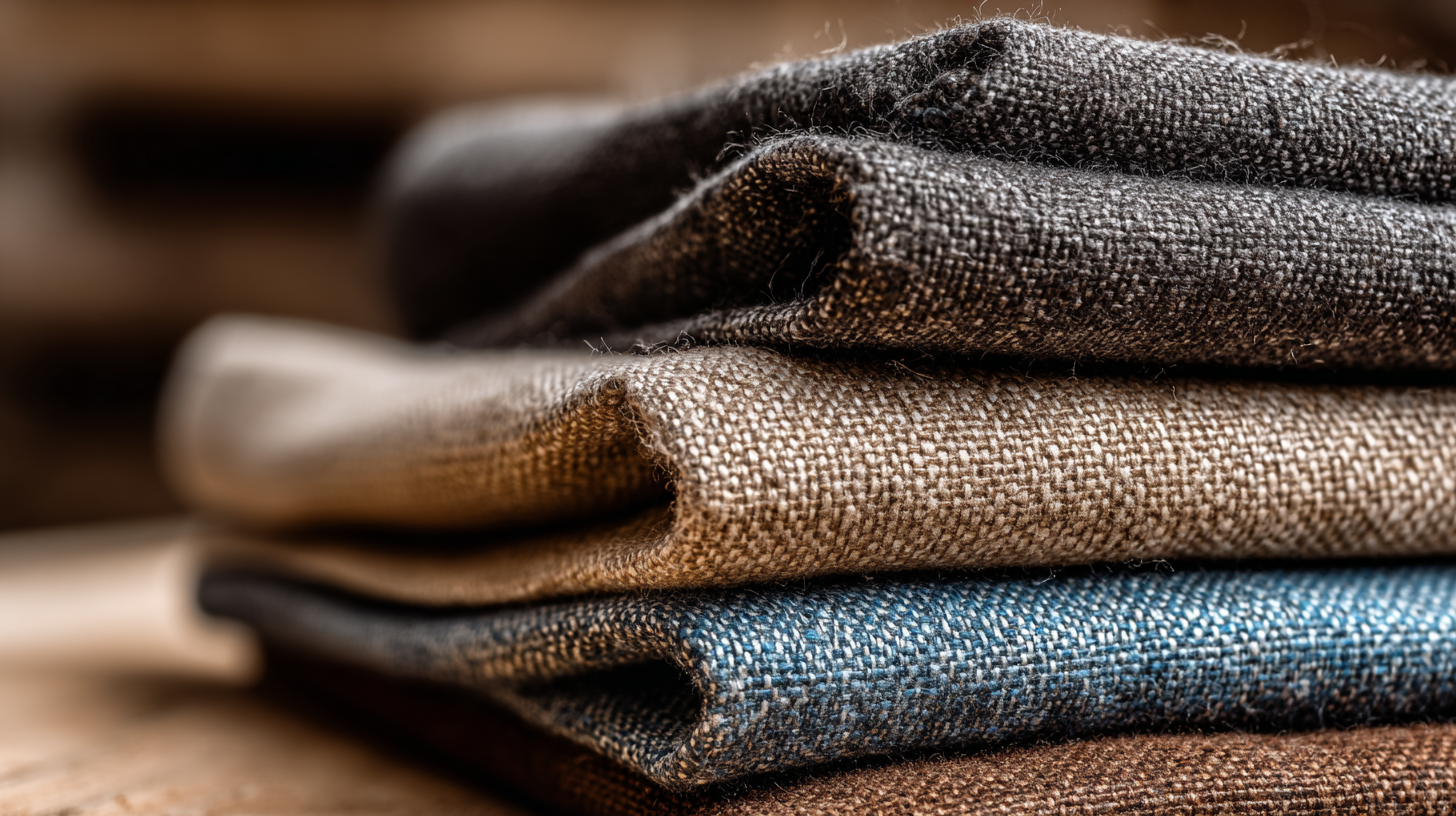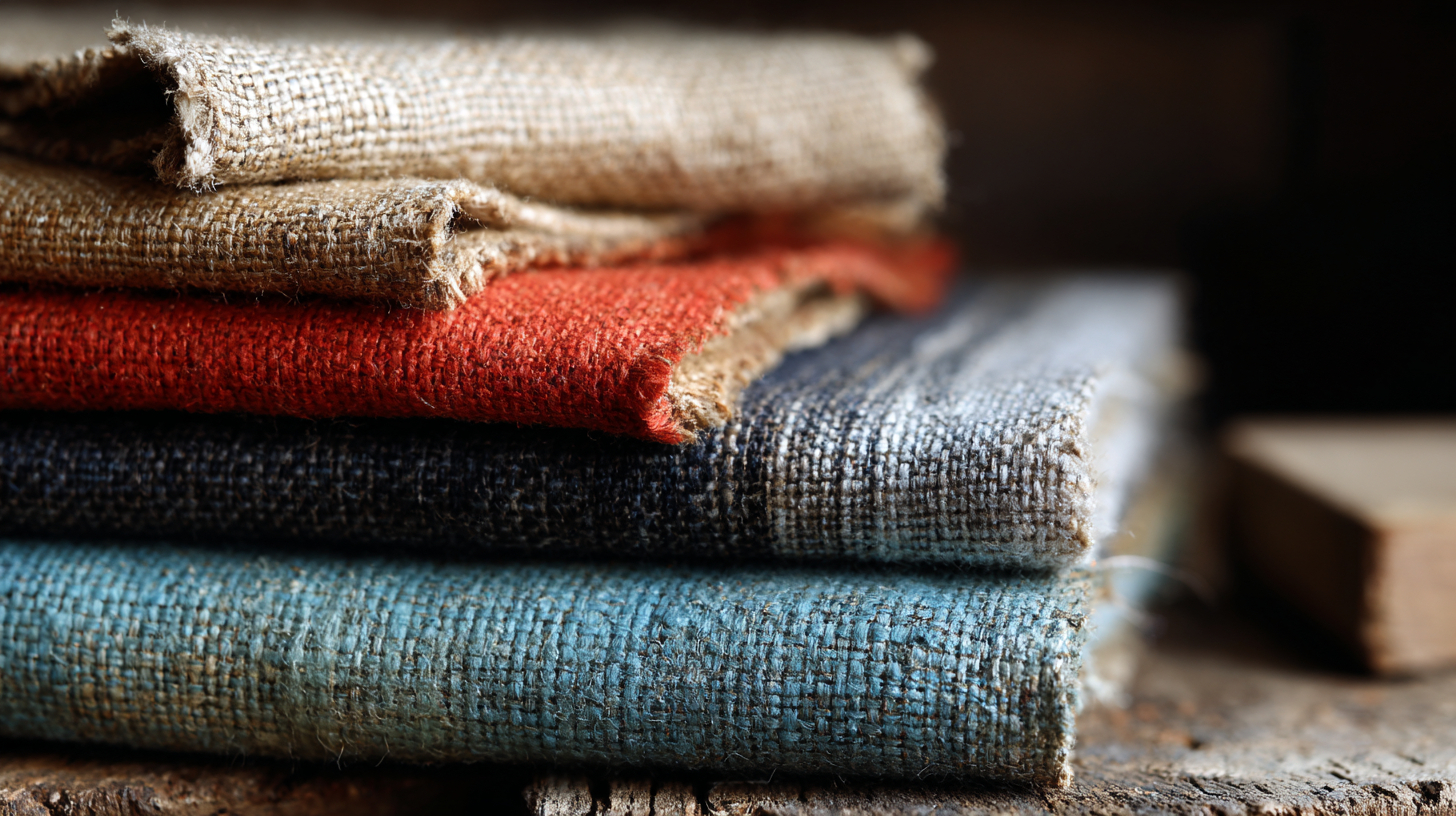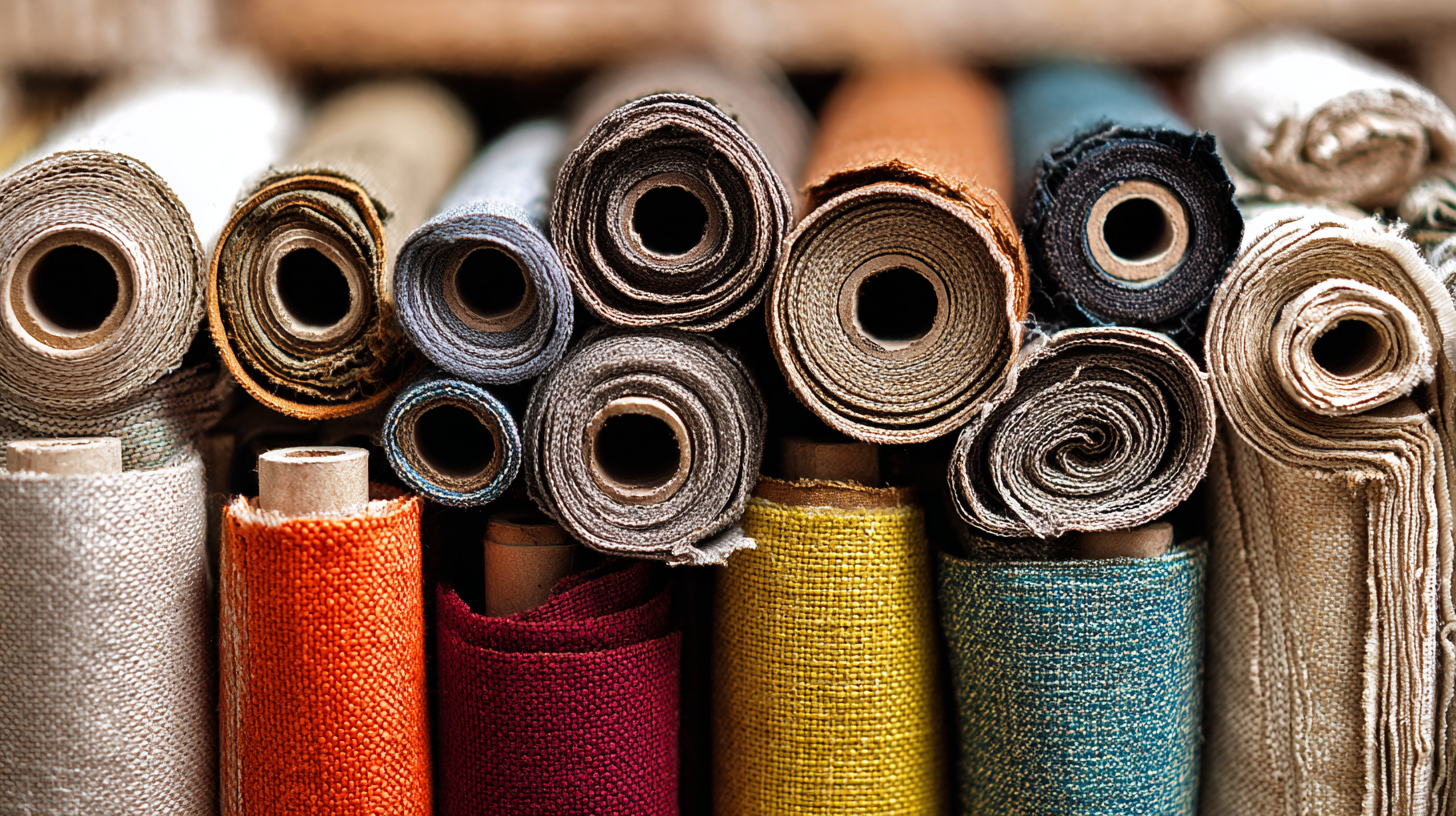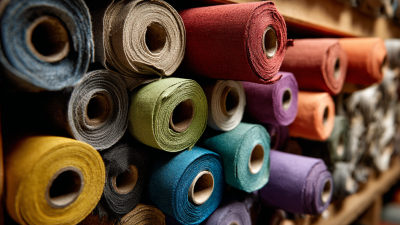When embarking on your next creative project, selecting the right materials is crucial to achieving both quality and sustainability. One option that has gained immense popularity among environmentally-conscious designers and DIY enthusiasts is Recycled Canvas Fabric. This versatile material not only boasts durability and aesthetic appeal, but also helps reduce environmental impact by repurposing waste.
Whether you’re crafting bags, home decor, or clothing, choosing the best recycled canvas fabric can significantly influence the outcome of your project. In this blog, we’ll explore seven essential tips that will guide you in selecting the ideal recycled canvas fabric tailored to your needs, ensuring your creations are not only stylish but also eco-friendly.

Join us as we delve into the world of recycled materials and uncover how to make informed choices for your sustainable projects.
 Recycled canvas fabric is an excellent choice for sustainable projects, blending utility with environmental responsibility. Unlike traditional canvas, which often relies on new materials, recycled canvas utilizes post-consumer waste, such as discarded textiles and plastic bottles, transforming them into durable fabric. This innovative approach not only reduces landfill waste but also conserves natural resources by minimizing the need for virgin materials, making it an eco-friendly alternative that supports a circular economy.
Recycled canvas fabric is an excellent choice for sustainable projects, blending utility with environmental responsibility. Unlike traditional canvas, which often relies on new materials, recycled canvas utilizes post-consumer waste, such as discarded textiles and plastic bottles, transforming them into durable fabric. This innovative approach not only reduces landfill waste but also conserves natural resources by minimizing the need for virgin materials, making it an eco-friendly alternative that supports a circular economy.
When selecting recycled canvas fabric, it's important to consider the various types available. Options range from lightweight, versatile blends suitable for crafting bags and garments to heavier versions ideal for outdoor furniture or home decor. Understanding the benefits of recycled canvas extends beyond sustainability; it also offers distinctive qualities such as unique textures and color variations, which can enhance the aesthetic appeal of your projects. By opting for recycled canvas, you contribute to a more sustainable future while enjoying the unique charm and functionality that this fabric brings to your creative endeavors.
When sourcing recycled canvas fabric for your next project, several key factors must be taken into account to ensure quality and sustainability. First and foremost, understand the source of the recycled material. Fabrics made from post-consumer waste are often more sustainable than those derived from industrial scraps. Look for certifications that indicate responsible sourcing practices, which can provide peace of mind regarding the environmental impact of your fabric.
Next, consider the fabric's durability and texture. High-quality recycled canvas should exhibit robust strength and resistance to wear, similar to conventional canvas materials. Check the weight of the fabric and its ability to hold up under various conditions, especially if your project involves heavy use. Additionally, consider the dyeing process and chemical treatments used, as these can affect not only the fabric’s sustainability but also its safety for various applications. By prioritizing these factors, you can select recycled canvas that not only meets your project's aesthetic needs but also aligns with your commitment to eco-friendly practices.
The decision to use recycled canvas fabric over new materials carries significant environmental implications. According to the Ellen MacArthur Foundation, switching to recycled materials can reduce carbon emissions by up to 70% compared to using virgin materials. This statistic highlights the critical role that recycled fabrics can play in combating climate change, which is increasingly vital as the fashion industry accounts for approximately 10% of global greenhouse gas emissions.
Moreover, the water savings associated with recycled fabrics are substantial. The World Wildlife Fund (WWF) reports that producing one pound of new cotton requires around 2,700 liters of water, a staggering amount particularly in water-scarce regions. In contrast, utilizing recycled materials cuts down on these water-intensive processes, promoting more sustainable water management. As consumers become more environmentally conscious, the choice of recycled canvas fabric is not just a personal style statement but a proactive step toward reducing one’s ecological footprint and fostering a more sustainable textile industry.

When selecting recycled canvas fabric for your next project, it's crucial to consider both weight and texture, as these elements directly influence the durability of your final product. Heavier fabrics often provide more sturdiness, making them ideal for items that will face frequent use, like bags or upholstery. Conversely, lighter weights can be suitable for garments and craft projects where flexibility and ease of handling are prioritized.
Another essential factor to consider is the texture of the fabric. A smooth finish can lend a polished appearance and facilitate easier sewing, while a more textured surface may enhance grip and overall aesthetic. When choosing your fabric, think about the intended outcome; for instance, if you're creating outdoor gear, select a heavier, textured fabric that can withstand the elements.
Finally, always source from reputable suppliers who offer detailed specifications on their recycled canvas. This ensures that you can make informed decisions based on the fabric’s performance characteristics, helping you select the best material for any project.
When embarking on a project that requires recycled canvas fabric, selecting the right supplier is crucial to ensuring quality and sustainability. Start by evaluating the suppliers' certifications and practices. Look for those who prioritize eco-friendly production methods and have transparent sourcing policies. This not only guarantees that you are using high-quality materials, but also supports ethical business practices.
Next, consider the variety of options each supplier offers. Not all recycled canvas fabrics are created equal; some may have different textures, durability levels, and colors. Choosing a supplier that provides a diverse range allows you to find the perfect material tailored to your specific project needs. Ensure to request samples, as this will help you assess the fabric's feel and durability firsthand.
Lastly, inquire about the minimum order quantities and pricing structures. A reputable supplier should have clear pricing policies and be willing to accommodate projects of various sizes. Comparing multiple suppliers based on these criteria not only helps you find the best recycled canvas fabric but also supports a competitive market for sustainable materials.






